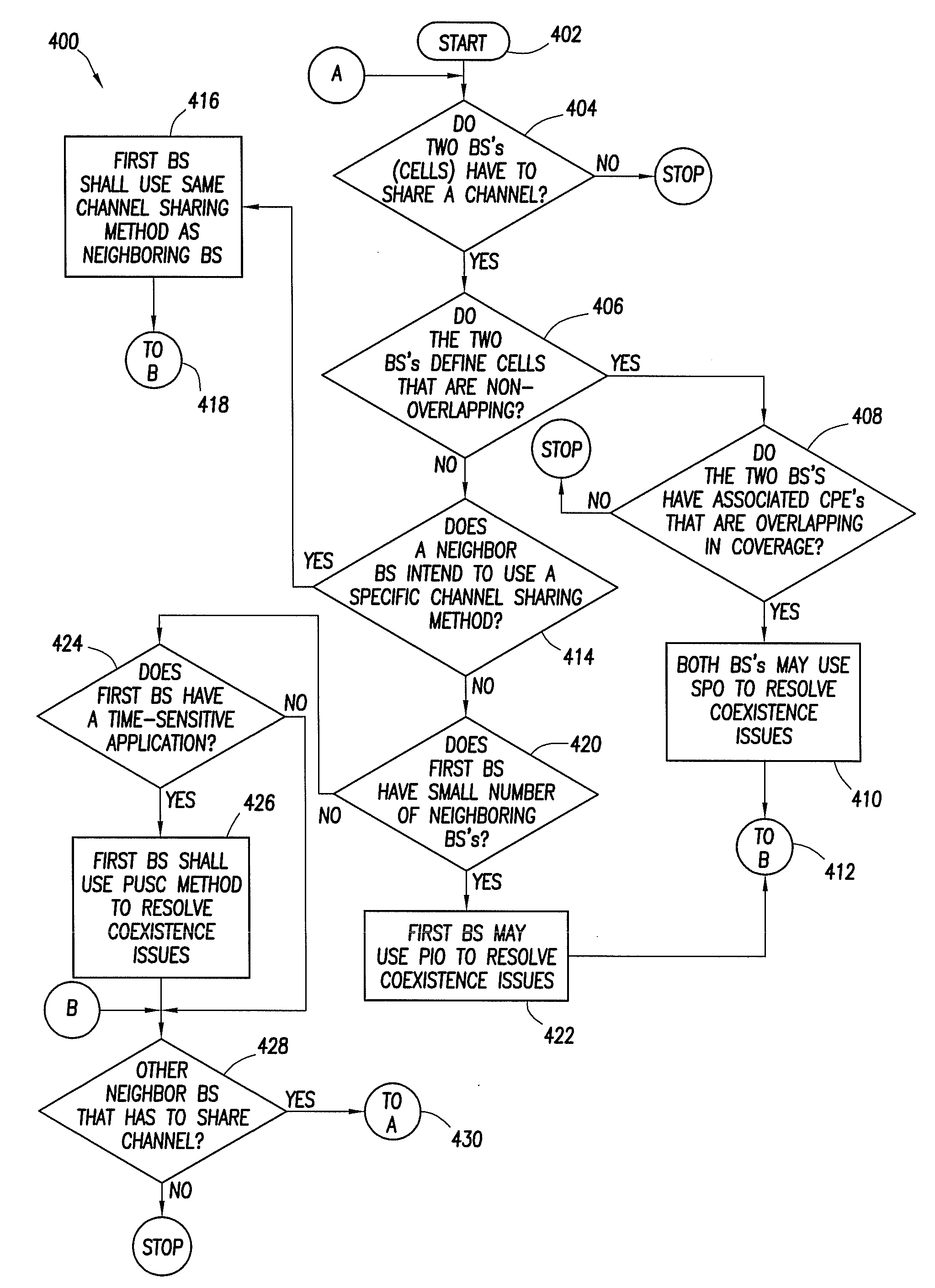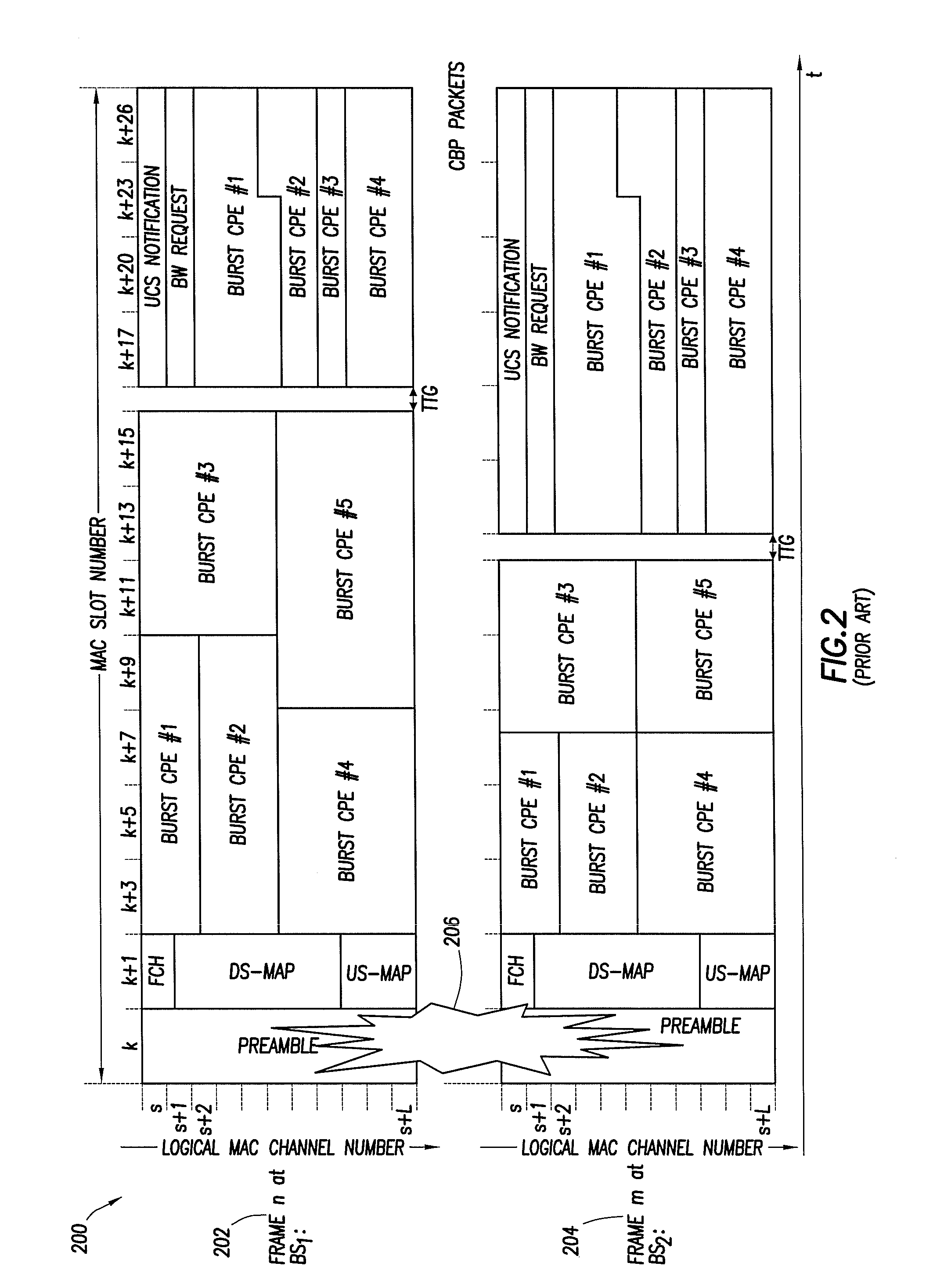Method and system for sharing spectrum in a wireless communications network
a wireless communication network and wireless communication technology, applied in the field of telecommunications, can solve the problems of inter-cell coexistence, inter-cell coexistence, and inability to provide suitable pre-planning for the network bss,
- Summary
- Abstract
- Description
- Claims
- Application Information
AI Technical Summary
Problems solved by technology
Method used
Image
Examples
Embodiment Construction
[0019]Notably, for those systems using dynamic frequency selection under the current 802.22 standard, the collisions of preambles and headers in the signaling messages from neighbor BSs will prohibit coexistence between neighbor cells and / or sectors. The present invention provides a method and system for spectrum sharing and inter-cell coexistence in a wireless communications network, which resolves the dynamic frequency selection issue and enables the neighboring BSs to resolve their coexistence problems by themselves. In a first example embodiment, the neighbor BSs in a wireless communications network can contend over the air interface (or backhaul network) to become a master BS. The master BS can then decide for the neighbor BSs, which BS will use which PN sequence and sub-channelization configuration. This approach maintains the proposed PUSC sub-channelization structure and the receiver design of CPEs, and also resolves the collision problem resulting from the dynamic frequency...
PUM
 Login to View More
Login to View More Abstract
Description
Claims
Application Information
 Login to View More
Login to View More - R&D
- Intellectual Property
- Life Sciences
- Materials
- Tech Scout
- Unparalleled Data Quality
- Higher Quality Content
- 60% Fewer Hallucinations
Browse by: Latest US Patents, China's latest patents, Technical Efficacy Thesaurus, Application Domain, Technology Topic, Popular Technical Reports.
© 2025 PatSnap. All rights reserved.Legal|Privacy policy|Modern Slavery Act Transparency Statement|Sitemap|About US| Contact US: help@patsnap.com



